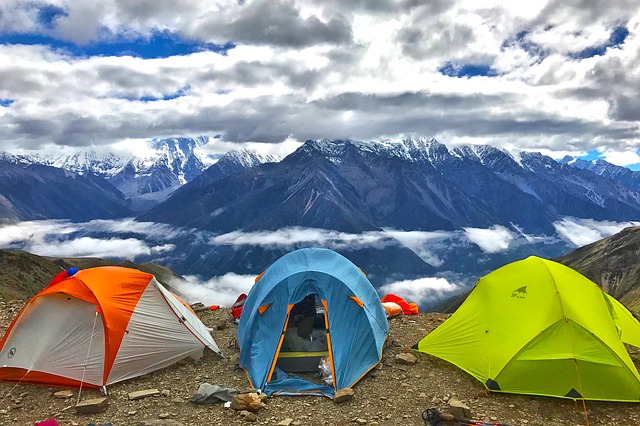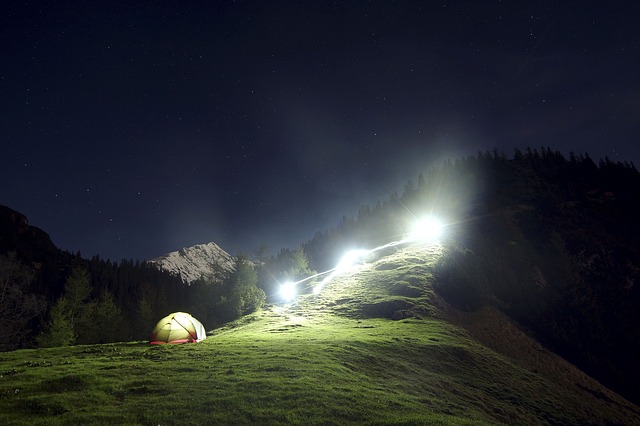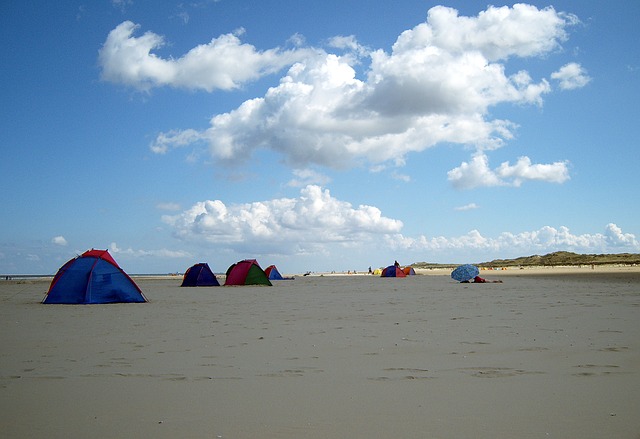I bet you’ve never thought about the placement of your tent.
Well…it probably has crossed your mind ever so slightly.
Truth be told you will run into problems no matter where you place it.
This is what they don’t tell you about tent placement.
And who are “they”, you ask?
“They” are you, me, and every other living camper.
Pitching a Tent:
On the Beach
Pitching a tent on the beach might seem like one hell of a sweet spot, but have you even CONSIDERED what you’ll be getting yourself into?
First and foremost you will need much stronger stakes than those factory ones you got from your new $50 tent.
And secondly, be prepared to sweep out sand several times a day!
Are you willing to deal with these issues to gain the massive plus? (the amazing views and relaxing sounds!)
Established Campsites
Those public campsites have been used over and over again.
On a typical camping season people have just left before you turned up, then after you leave somebody else takes your place.
The cycle continues month after month, season after season, year after year.
The campsites’ grass is patchy at best, and a lot of the time the grass is dead.
Fresh, green grass is virtually non-existent – unless you’re willing to go wilderness camping of course.
With a View

Usually when we camp we want a VERY picturesque view.
However, just like I’ve mentioned already in this article, the “really good” spots have the worst consequences.
You’ll likely get battered by the wind even if they’re not strong, and the heat of the sun almost becomes unbearable – especially when it’s baking your tent in the morning!
Low-Lying Areas
You might think this is good for staying safe from the wind, sun and rain, but sadly you are in for a rude awakening.
Low-lying areas are possibly the WORST places to pitch your tent.
Flash floods hit hard, and they are deadly. You will be the first to wake up at 1 in the morning with a tent full of water.
I’m talking bucket loads too – no exaggeration.
Low-lying areas include ditches, ravines and bottom of hills – so avoid these at all costs.
On a Slope
On another note, you camp on a slope and you will avoid flash floods altogether.
However, you risk rolling over in the middle of the night, leaning into the walls and getting condensation buildup.
You might even wake up saturated because of it.
The best way to combat this is by sleeping with your feet towards the bottom of the hill and your head towards the top.
Just don’t do what I did and sleep awkwardly on a diagonal (hey, I enjoy my space alright!).
On a Hill

Again, this may come with a good view but you are more exposed to the elements.
You’re the first to get hit by the rain, you face more exposure to the sun and do you even want to get me started on thunderstorms.
This is definitely a good choice if you check the weather often.
Just don’t think it’s all roses and fairies, because that sick view comes at a cost my friend.
In the Shade
In the shade you may be safe from the scorching sun and whatnot, but is it worth sacrificing the view?
That is the all-important question and the reason why you need to focus on what you really want out of your campsite.
The shade is actually what most people strive for.
But do you want to be normal or do you want to be adventurous?
I know what I want!
So How Do We Choose the Right Location?
You need to determine what you want to keep and sacrifice.
For example: Do you want a good view but sacrifice being safe from the elements, or do you want to be in the shade instead and sacrifice a good view?
It is a catch-22 my friend.
There will always be pros and cons no matter where you pitch your tent.
So figure out what you want out of your campsite (views, safety, no weather exposure, etc), then you can properly choose a spot that fits your needs.
Thank you reading, but don’t go just yet!
Share your go-to camping spot with us first! I’m sure we can all learn a thing or two 🙂

